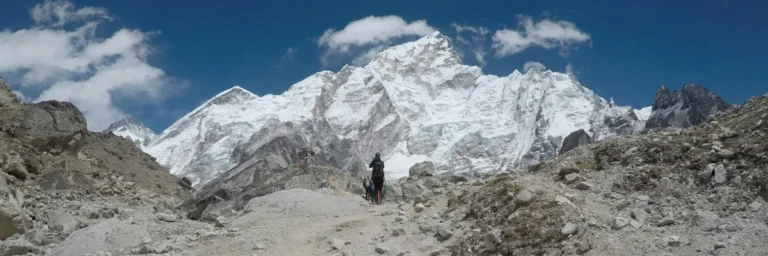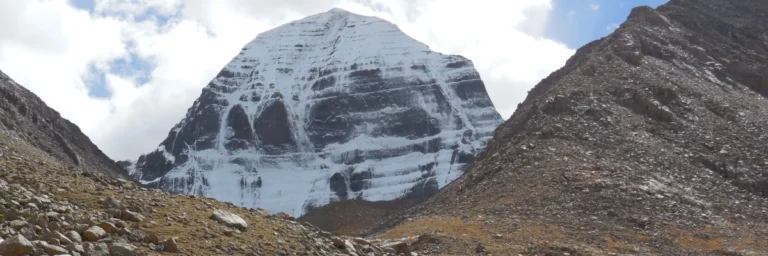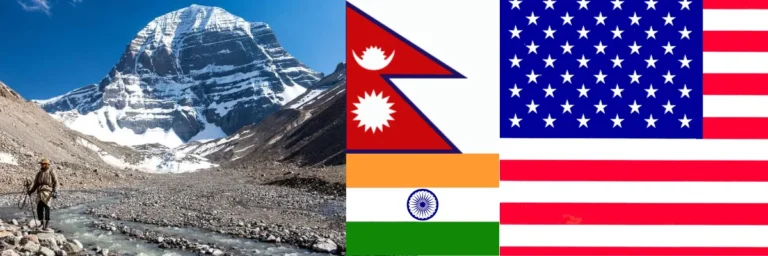Experience the real beauty of the rich culture of Tibet, Nepal, and Bhutan Tour on an awesome journey through the Himalayas. This special tour combines lively cities, deep spiritual experiences, and phenomenal landscapes.
Begin your adventure in Beijing. This place is where you can explore ancient landmarks such as the Great Wall and the Forbidden City. Then, head to Lhasa in Tibet. In Tibet get a chance to explore the distinguished Potala Palace and Jokhang Temple in Lhasa. It provides an understanding into Tibetan Buddhism. Take part in communicating with the local communities and their traditional rituals. Also get the best of the views of the Himalayan landscape.
Next, travel to Nepal. Head directly to Kathmandu is the busy capital city of Nepal. It is where you can explore historic temples. You can also discover local traditions at its best. Visit Lumbini which is the birthplace of Buddha, and not to forget the peaceful Namo Buddha Monastery for a greater understanding of Buddhist heritage.
Conclude your tour in Bhutan. Bhutan is known for its commitment to preserving culture and nature together. Hike to the popular Tiger’s Nest Monastery, which is actually situated high on a cliff. Also experience the calmness of this delightful land.
Tibet Nepal Bhutan Tour promises a great spiritual exploration. This tour is going to be a truly fulfilling adventure.
Table of Contents
How to Reach Lhasa via Chengdu
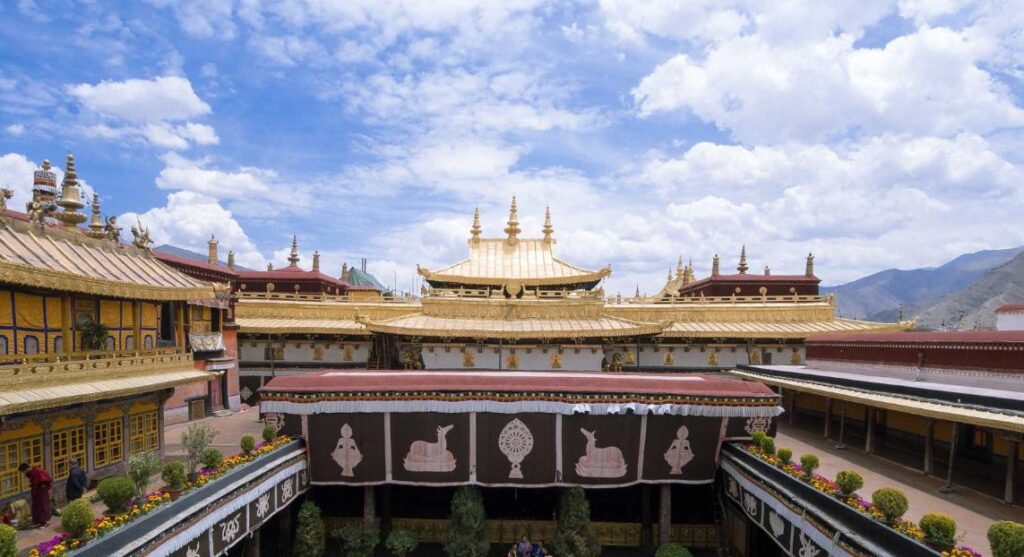
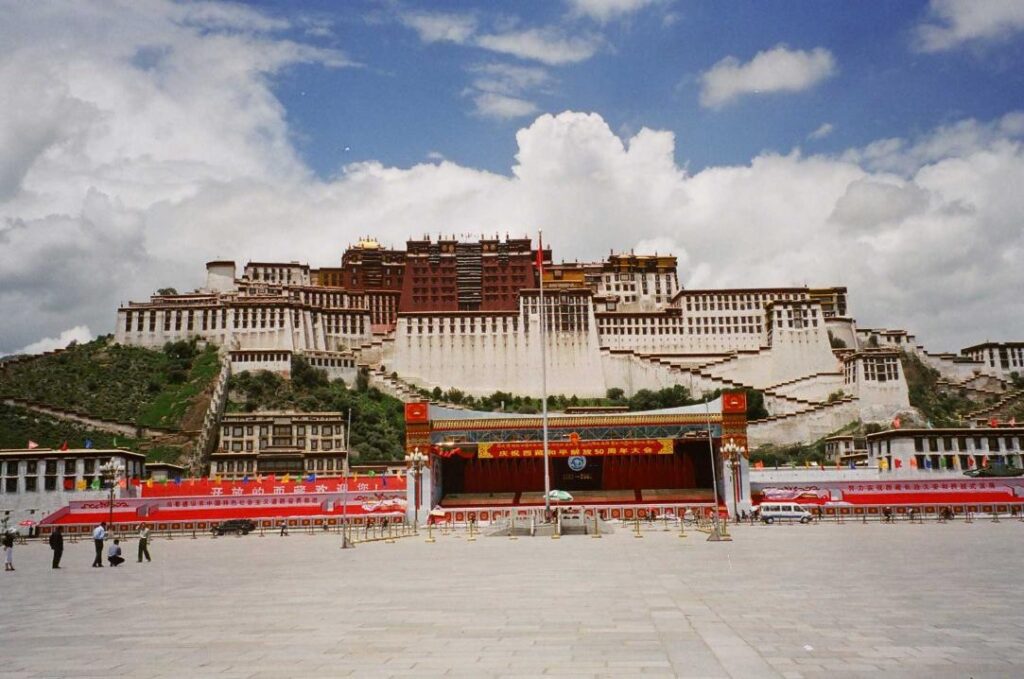
One of the most popular routes to Lhasa is via Chengdu, China during your Tibet Nepal Bhutan Tour. Chengdu is very well known for its rich cultural heritage and panda conservation centers. It serves as a convenient gateway to Tibet.
1. By Air
The most efficient way to reach Lhasa from Chengdu during your Tibet Nepal Bhutan Tour is by flight. Daily flights are available from Chengdu Shuangliu International Airport (CTU) to Lhasa Gonggar Airport (LXA). It is the direct flight from Chengdu (CTU) to Lhasa (LXA) and it takes approximately 2 hours and 24 minutes. The aerial view as you approach Lhasa is really hypnotic. It provides you with sights of the beautiful snow-capped peaks of the Himalayas .After landing, you can take a bus from Lhasa Airport to the city center.
2. By Train
Alternatively, travelers can take the Tibet Train too during the Tibet Nepal Bhutan Tour. It is going to be a journey known for its incredible views of the Tibetan Plateau. The train ride from Chengdu to Lhasa takes about 34 to 36 hours. It covers a distance of approximately 3,070 kilometers.The train departs from Chengdu West Railway Station at around 21:11 every other day and arrives in Lhasa at around 07:41 on the third day. Ticket prices range from ¥302.50 for a hard seat to ¥997.50 for a soft sleeper.
3. By Bus
If you prefer a more budget-friendly option on your Tibet Nepal Bhutan Tour, you can take a bus from Chengdu to Lhasa. This journey takes about 34 hours and costs around $71. Buses typically depart twice daily from Chengdu and arrive at Lhasa Bus Station.
4. Combination of Train and Flight
Another option is to fly to a nearby city like Xining and then take the train to Lhasa. This can be a way to break up the journey and enjoy the sights of Xining before heading to Tibet. The train from Xining to Lhasa offers stunning views of the Tibetan plateau.
How to Reach Lhasa via Beijing
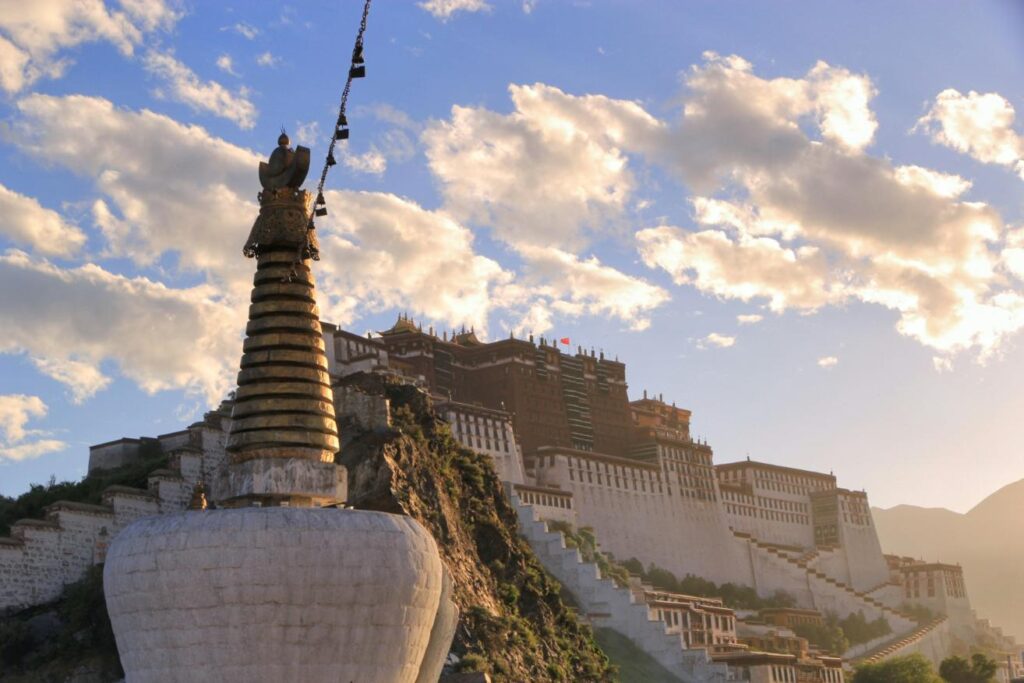
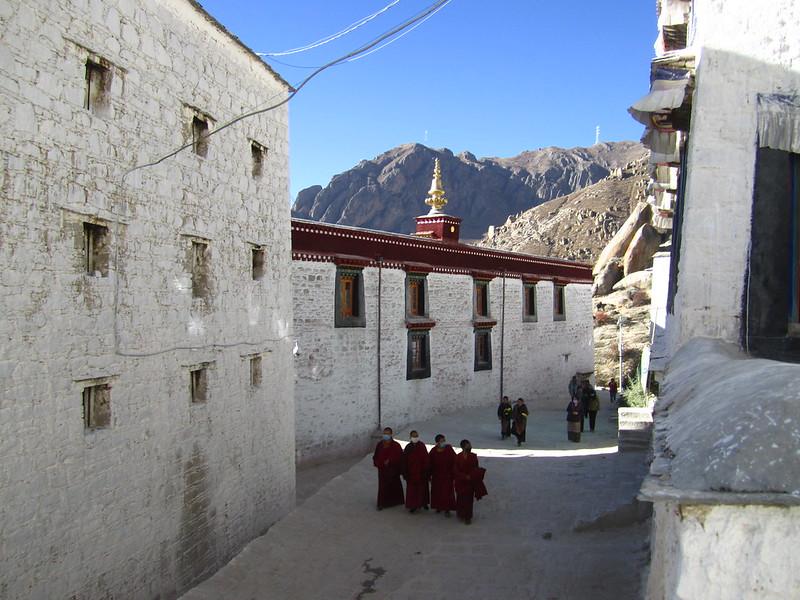

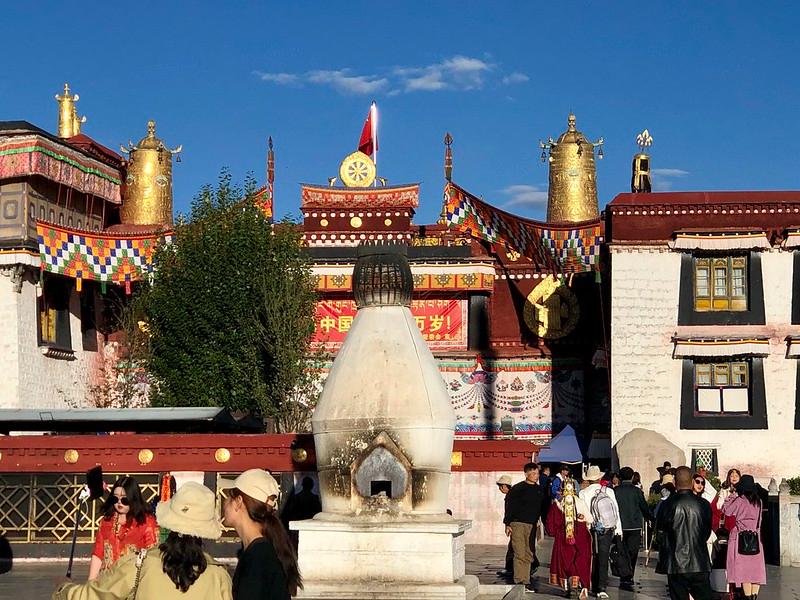
For those who prefer to start their journey from the capital city of China during the Tibet Nepal Bhutan Tour, Beijing provides another great route to Lhasa. To reach Lhasa from Beijing, you have two main options: flying or taking a train. Each method outs forward a different experience.
1. By Air
Flying is the quickest way to get to Lhasa during your Tibet Nepal Bhutan Tour. Direct flights from Beijing Capital International Airport (PEK) to Lhasa Gonggar International Airport (LXA) takes approximately about 4 hours. There are usually 3 non-stop flights daily which are operated by Air China. Prices for these flights range from about $385 to $405. The price actually depends upon the time of booking and demand.
2. By Train
For a more pleasing experience on your Tibet Nepal Bhutan Tour, you can take the train from Beijing to Lhasa. The train journey covers around 3,757 kilometers and It takes approximately 40 to 41 hours. The train departs daily from Beijing West Railway Station at 19:53 and arrives in Lhasa at around 11:36 two days later. Ticket prices for Lhasa via Beijing differ based on the class of service:
- Hard Seat: ¥360
- Hard Sleeper: ¥720
- Soft Sleeper: ¥1,144
The train ride presents fabulous views of the Tibetan plateau. It is considered one of the most impressive train journeys in the world. The Qinghai-Tibet Railway is an engineering wonder. It provides a very distinctive opportunity to experience the landscapes of multiple provinces along the way.
Places to Visit in Lhasa
Lhasa is known to be the “Land of the Gods,”. Lhasa is therefore the spiritual heart of Tibet. It is a city steeped in spirituality, culture, and history. Some of the must-visit places in Lhasa include:
1. Potala Palace
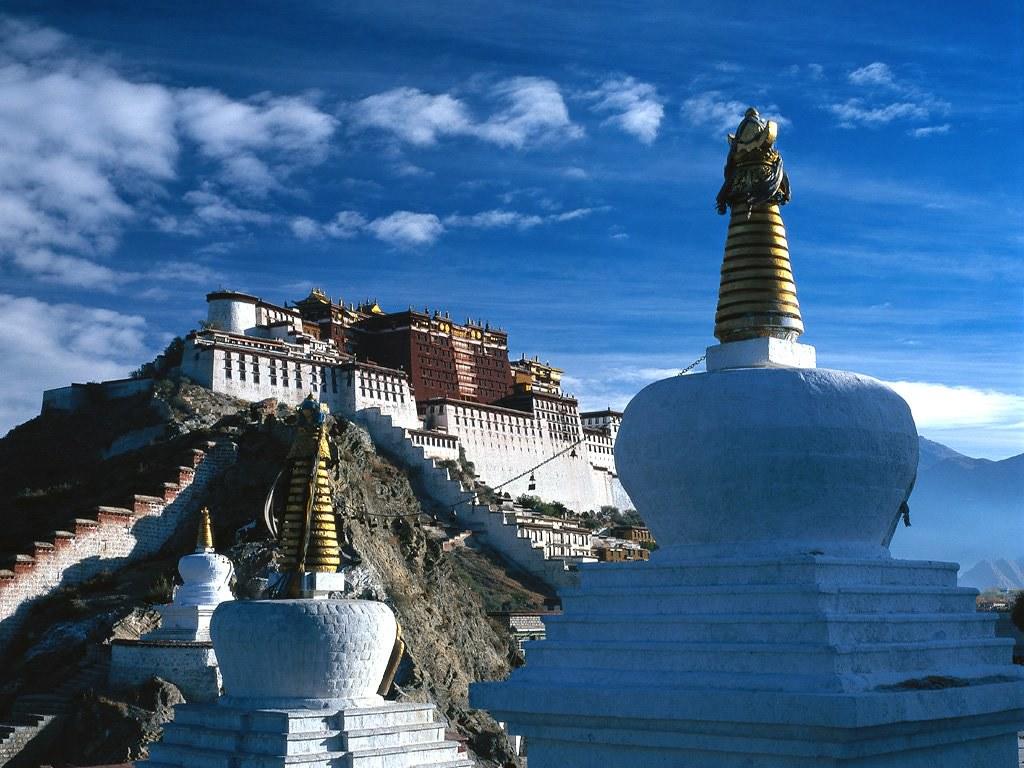

Potala Palace is a very popularUNESCO World Heritage Site. It is the former winter residence of the Dalai Lama. It has great architecture with a very rich history.
2. Jokhang Temple

Jokhang Temple is considered the most sacred temple in Tibet. It is actually the spiritual heart of Tibetan Buddhism. It has the revered statue of Jowo Shakyamuni Buddha. It is surrounded by the lively Barkhor Street.
3. Drepung Monastery
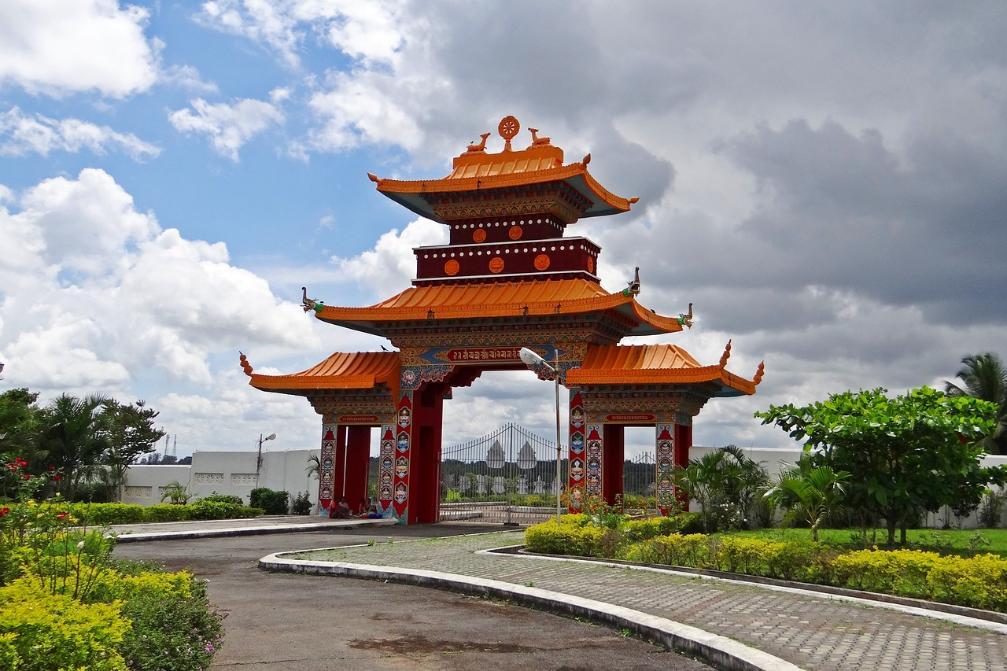
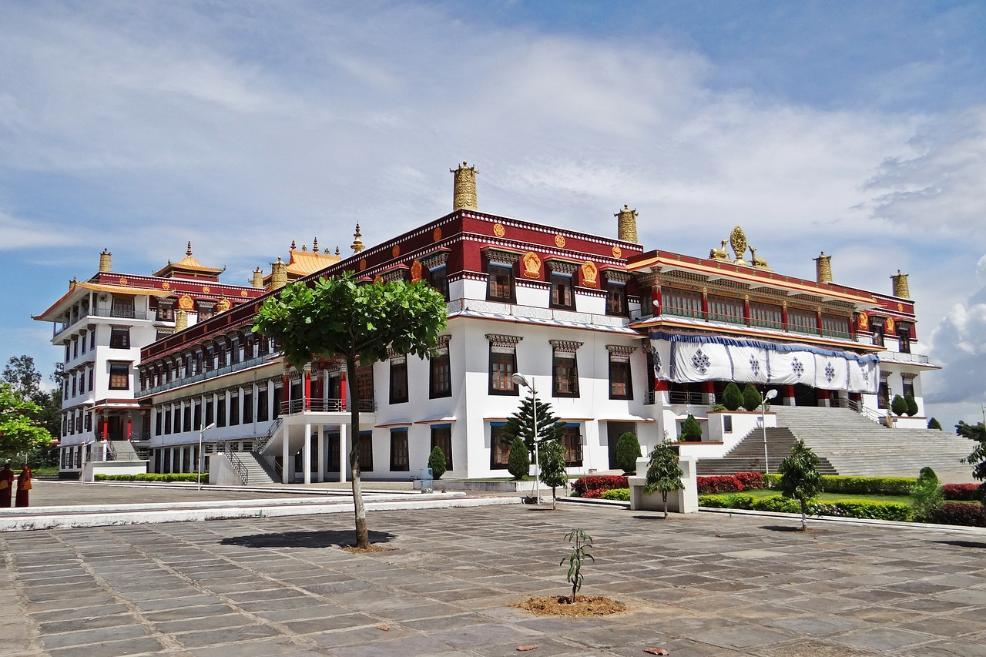
Drepung Monastery was once the largest monastery in Tibet. It is known for its really nice architecture and lively monk debates. It holds beautiful mountain views.
4. Sera Monastery
Sera Monastery is very famous for its engaging monk debates. This peaceful monastery is one of Tibet’s “Three Great Monasteries.”
5. Namtso Lake
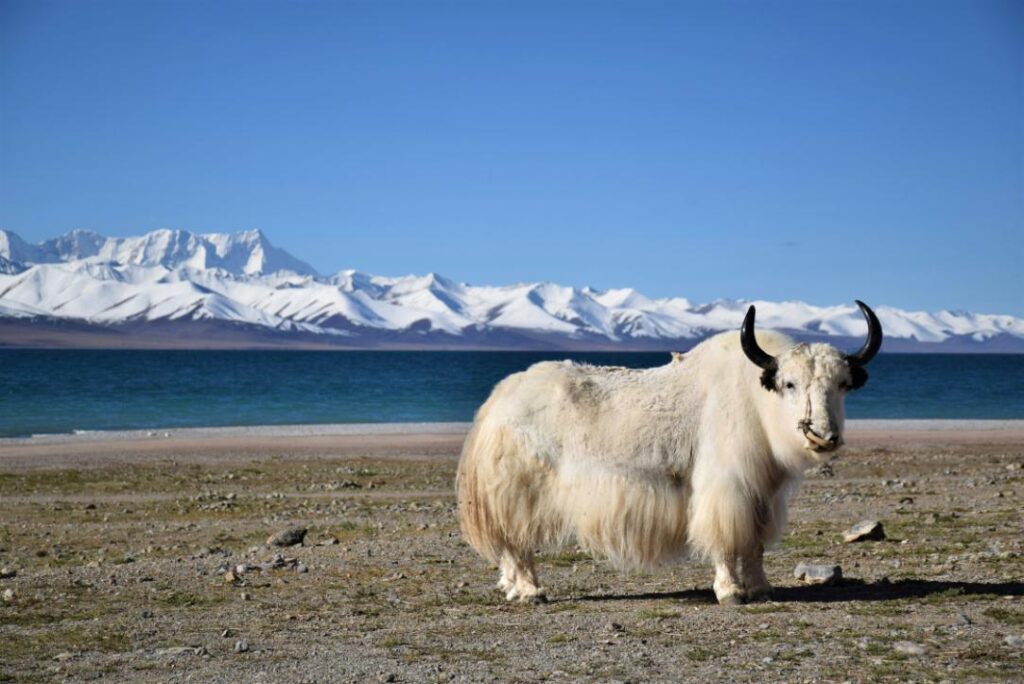
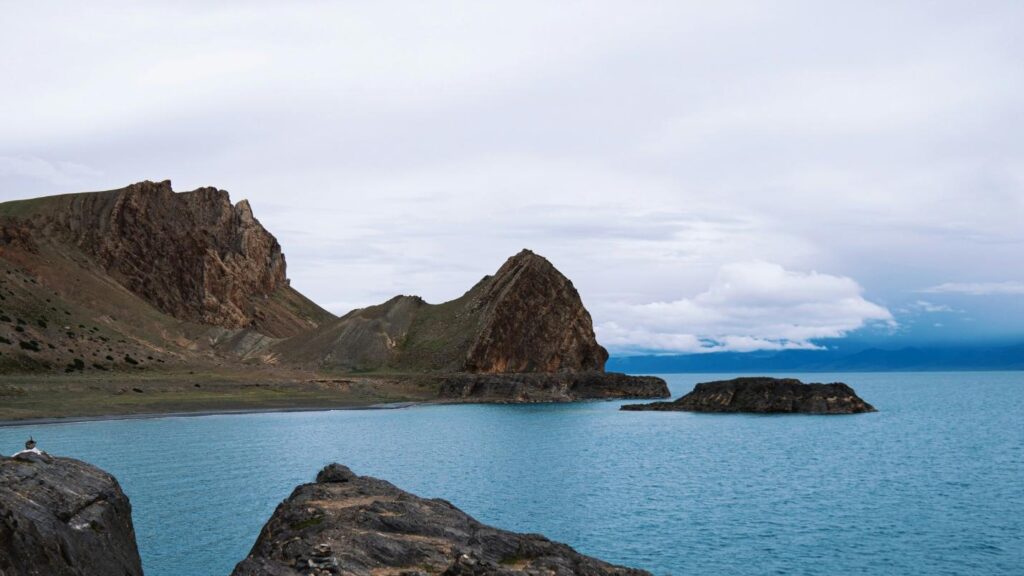
Namtso Lake is a beautiful turquoise lake. It is surrounded by snow-capped mountains. It is bestl for a day trip to experience Tibet’s natural beauty.
6. Norbulingka Palace
Norbulingka Palace is the summer residence of the Dalai Lama. It features traditional Tibetan architecture and beautiful gardens for relaxation.
7. Barkhor Street
It is a busy market surrounding Jokhang Temple. It is perfect for shopping for Tibetan handicrafts and also for experiencing local culture.
8. Ganden Monastery
Ganden Monastery is an important monastery providing with a very peaceful surroundings. It has great views and is best for meditation.
9. Drak Yerpa
Drak Yerpa is a very sacred site with ancient meditation caves. It provides a very peaceful environment for spiritual reflection.
10. Nanshan Park
Nanshan Park Provides a great panoramic view of Lhasa and the Potala Palace. It is perfect for leisurely walks and also perfect for photography.
Flight from Lhasa to Kathmandu
After exploring the spiritual and cultural riches of Lhasa, the next destination is Kathmandu, Nepal during your Tibet Nepal Bhutan Tour. Several direct flights operate daily from Lhasa Gonggar Airport to Tribhuvan International Airport (KTM) in Kathmandu. The flight duration is about 1.5 hours, and it provides stunning aerial views of the Himalayan ranges, including the world-famous Mount Everest.
To travel from Lhasa to Kathmandu, you have a few options essentially focused on air travel, as there are no direct land routes. Here are the details:
There are several direct flights operating daily from Lhasa Gonggar Airport to Tribhuvan International Airport (KTM) in Kathmandu. Currently, Himalaya Airlines operates direct flights. The duration of the flight takes approximately 1 hour and 35 minutes. And this flight actually provides phenomenal aerial views of the Himalayan ranges, including the world-famous Mount Everest.
Connecting Flights:
If you cannot find a direct flight during your Tibet Nepal Bhutan Tour, connecting flights are available with layovers in cities such as Chengdu or Kunming. These flights can take significantly longer, many times exceeding 18 hours depending on the layover duration.
Booking Tips
- Advance Booking: It is highly advisable to book your tickets at least 20 days in advance, especially during peak tourist seasons which is from July to September.
- Airport Information: Lhasa Gonggar Airport (LXA) is the main airport serving Lhasa, while Tribhuvan International Airport (KTM) serves Kathmandu.
Best Places to Visit in Kathmandu
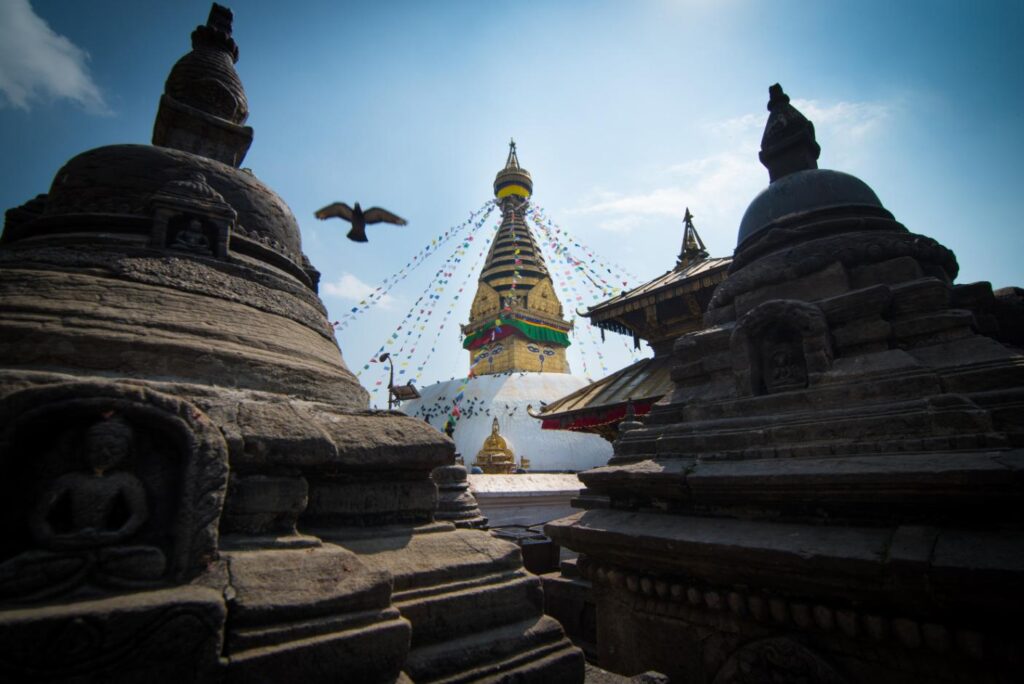
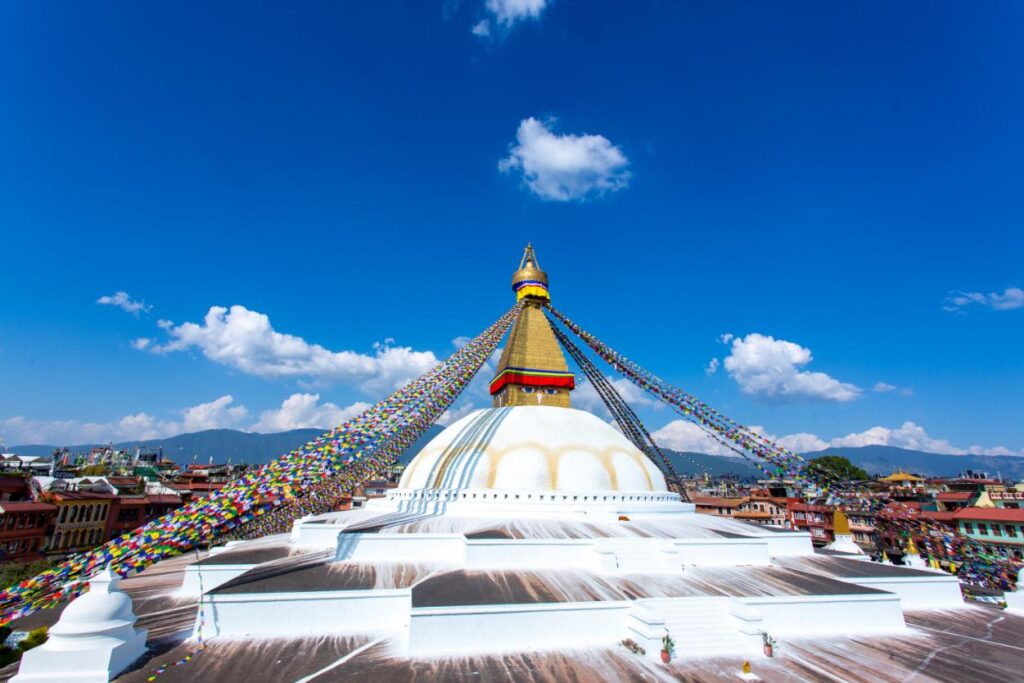
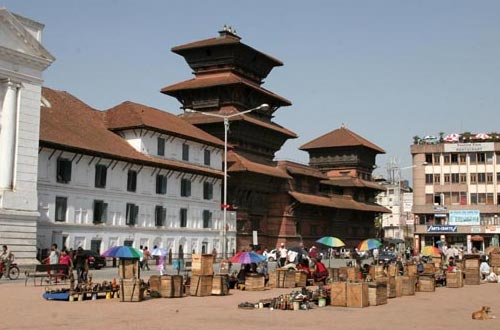
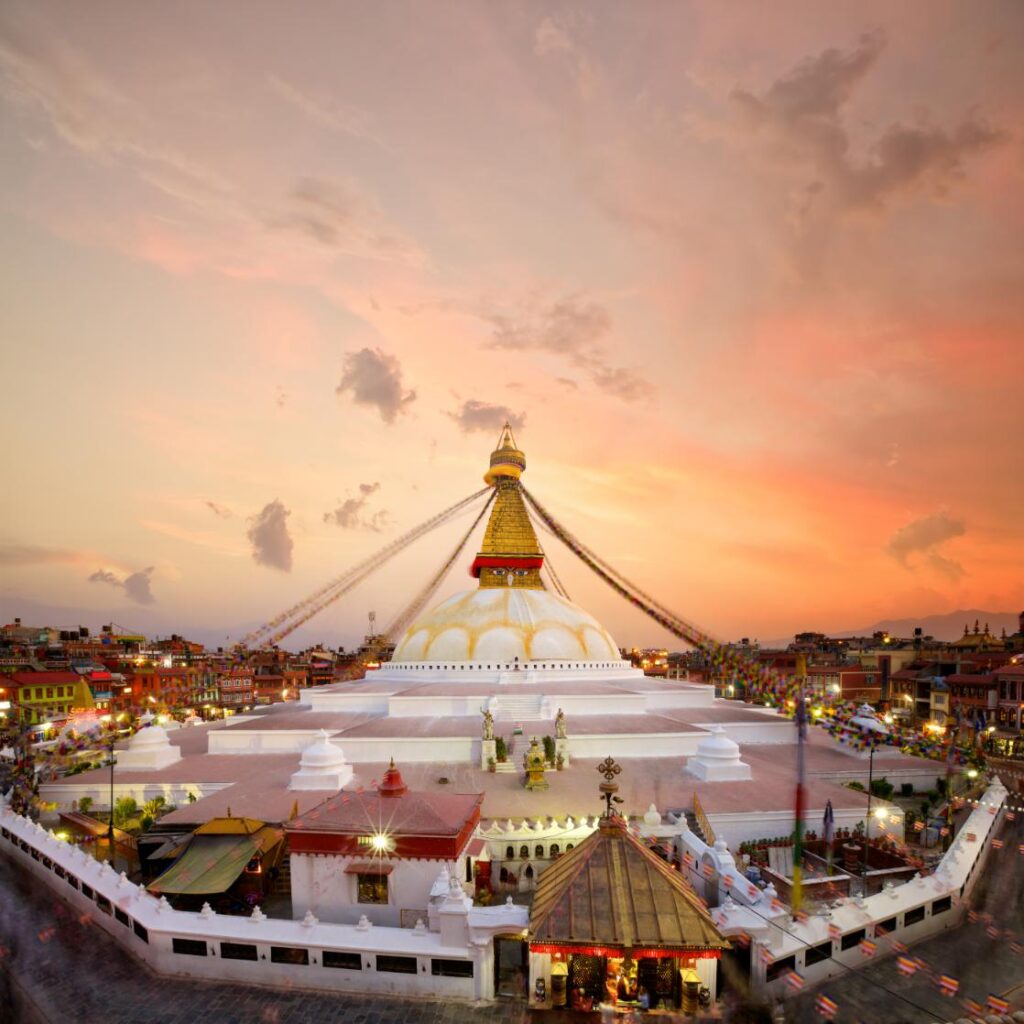
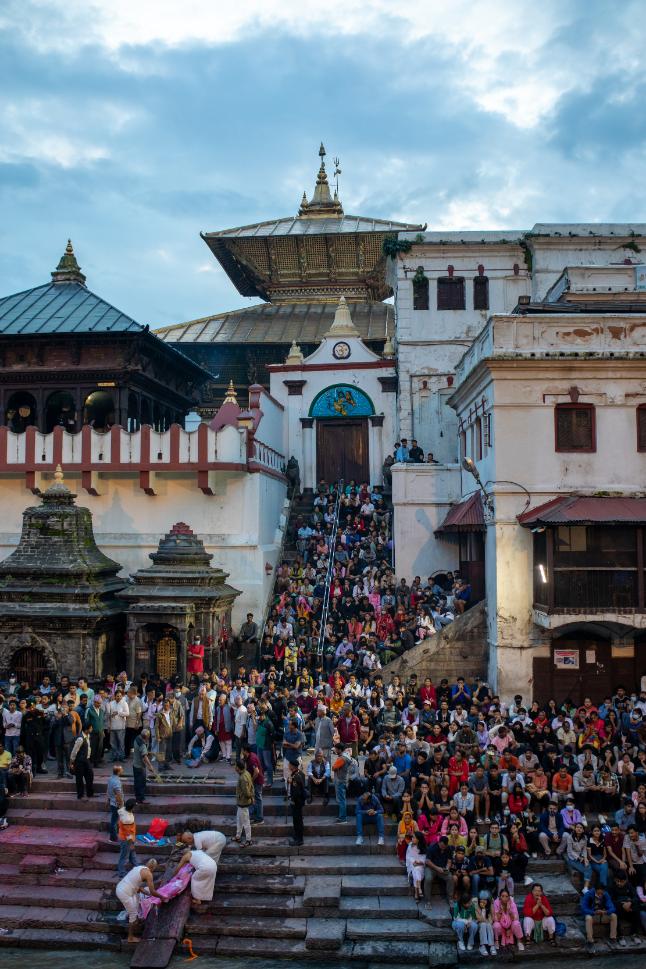
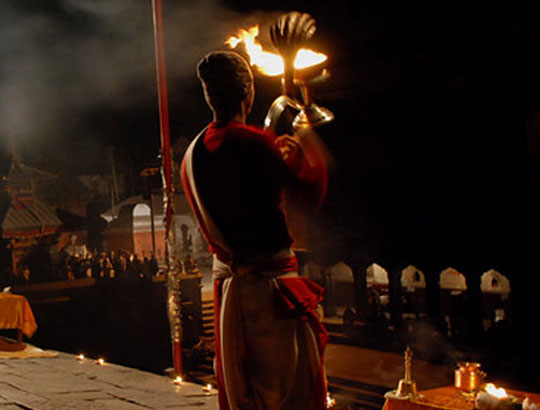
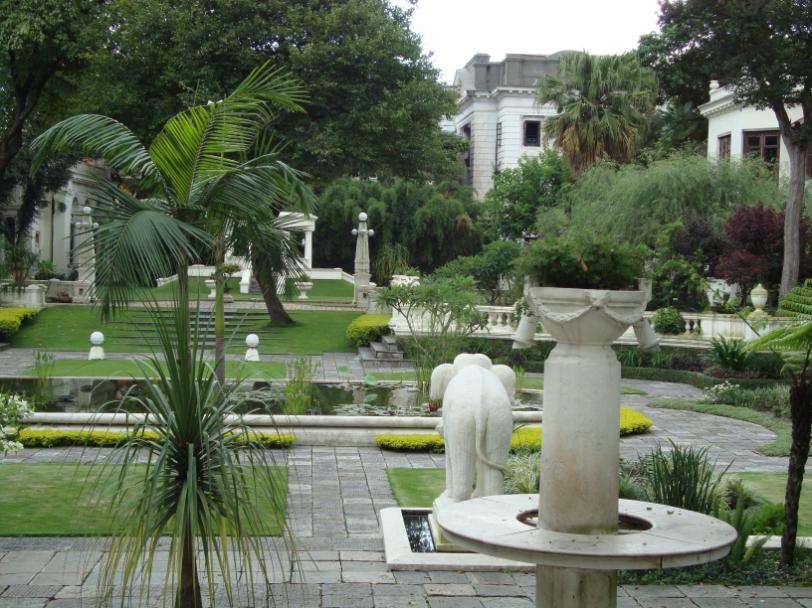
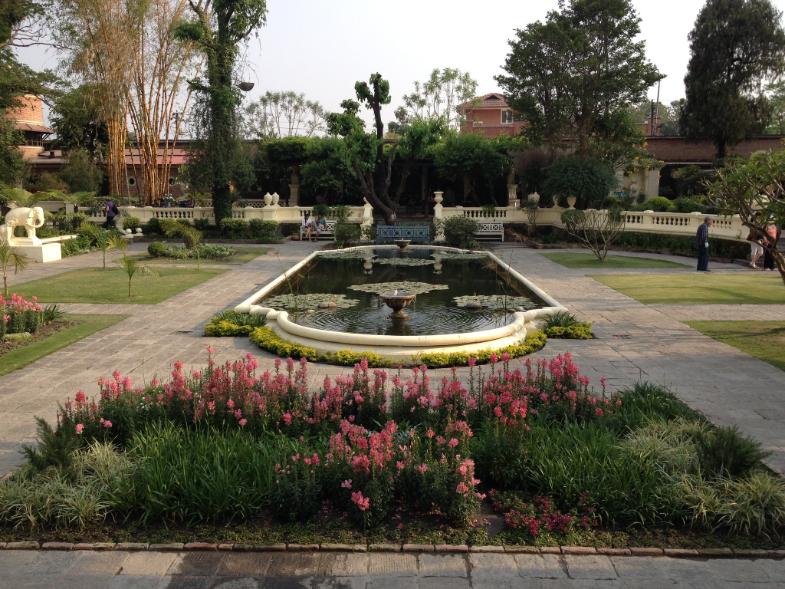
during your Tibet Nepal Bhutan Tour, Kathmandu will be a stop to see its magic. Kathmandu is the capital of Nepal. It is a city of amazing culture, ancient history, and great architecture. Some of the must-visit places in Kathmandu include:
1. Boudhanath Stupa


Boudhanath Stupa is actually one of the largest Buddhist stupas in the world. It is recognized as a UNESCO World Heritage Site. It is the focal point for Tibetan Buddhism in Nepal. The surrounding area is filled with monasteries, shops, and cafes, making it a vibrant spiritual hub.
2. Durbar Square
Durbar Square is a palace dating back to the 12th century. The square is an essential cultural site, with highlights including the Hanuman Dhoka palace complex and the living goddess, the Kumari. The area is really lively with local life.
3. Swayambhunath Temple
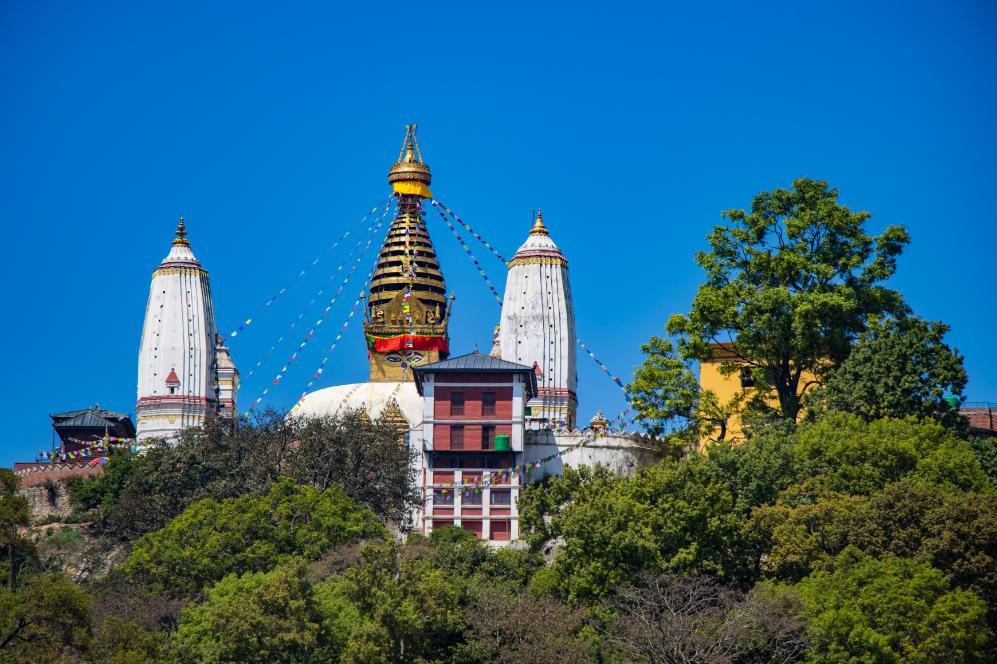
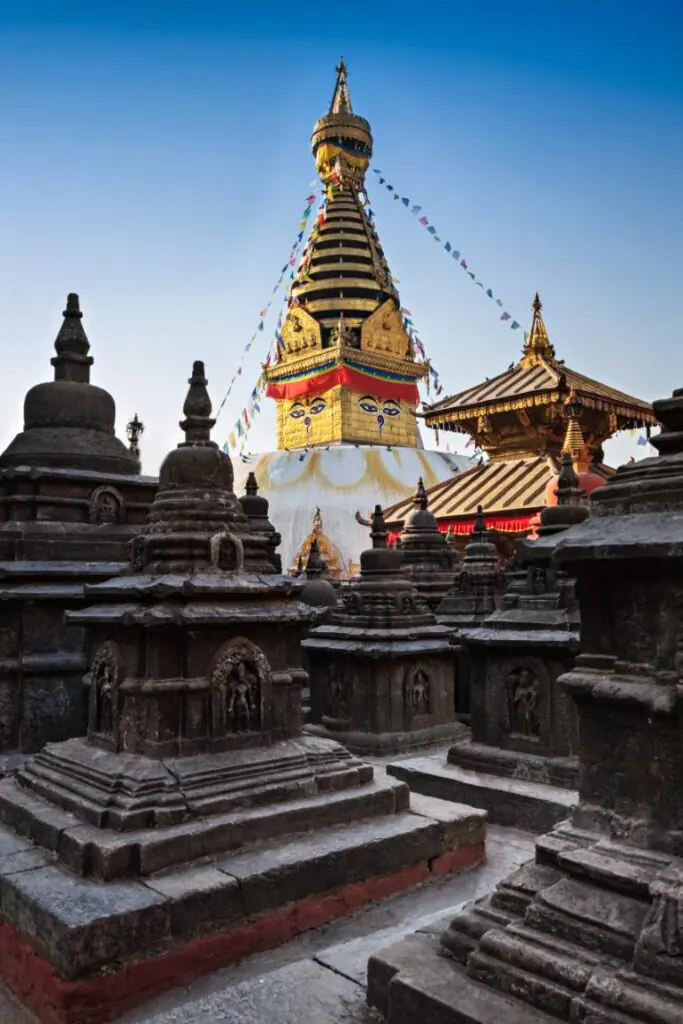
Swayambhunath is also very famous as the Monkey Temple. It is a sacred site located at the top of a hill. It has the greatest view of the entire Kathmandu city. This ancient stupa is filled with colorful prayer flags and features both Buddhist and Hindu elements. It therefore reflects the region’s diverse spiritual heritage.
4. Pashupatinath Temple


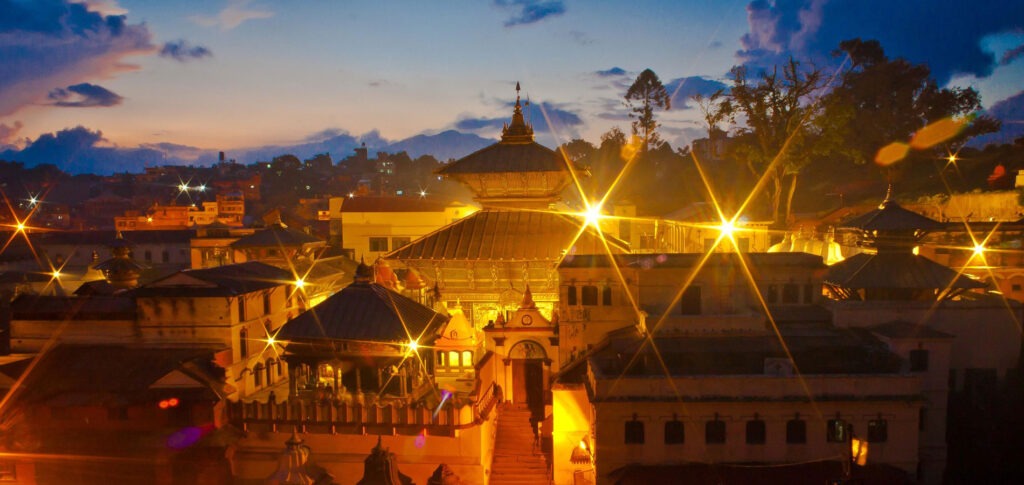
Pashupatinath Temple is one of the holiest Hindu temples in Nepal. It is situated on the banks of the Bagmati River. The temple has beautiful architecture, including ornate pagodas and amazing carved doors. Visitors can also witness traditional cremation ceremonies along the river. It thus provides understanding into Hindu customs and beliefs.
5. Kopan Monastery
Kopan Monastery is a Tibetan Buddhist monastery. It is well known for its meditation courses and teachings. It is situated on a hilltop and it provides a really great view of the Kathmandu Valley. The monastery’s beautiful gardens and peaceful atmosphere make it the best retreat for spiritual growth.
6. Thamel
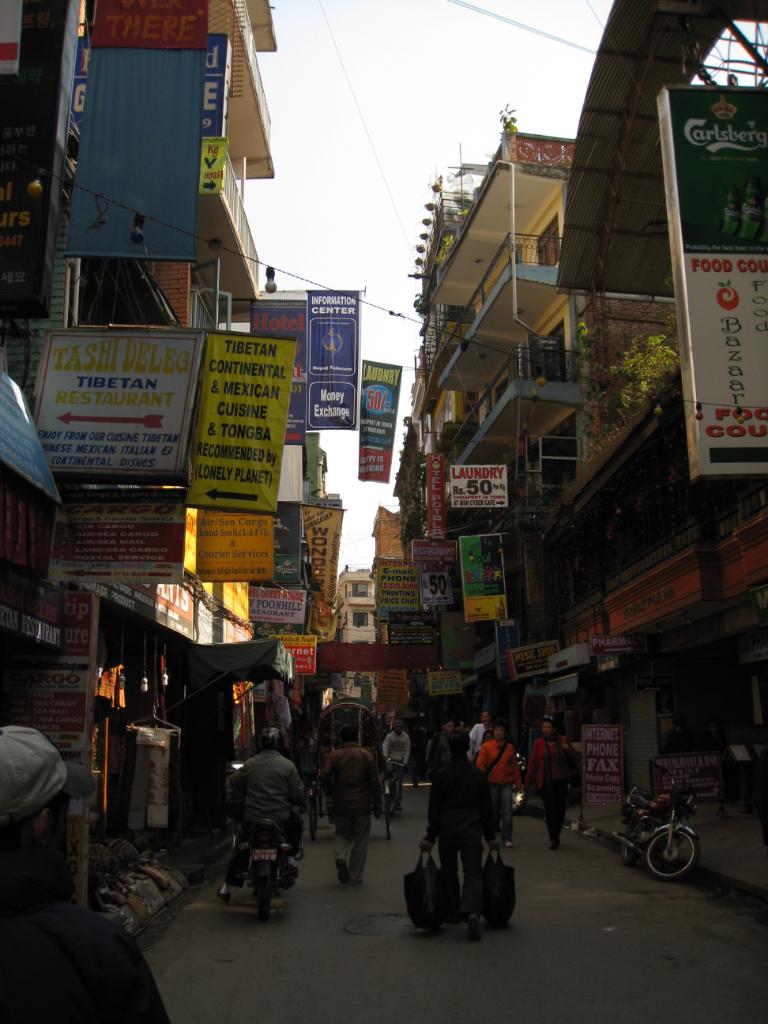
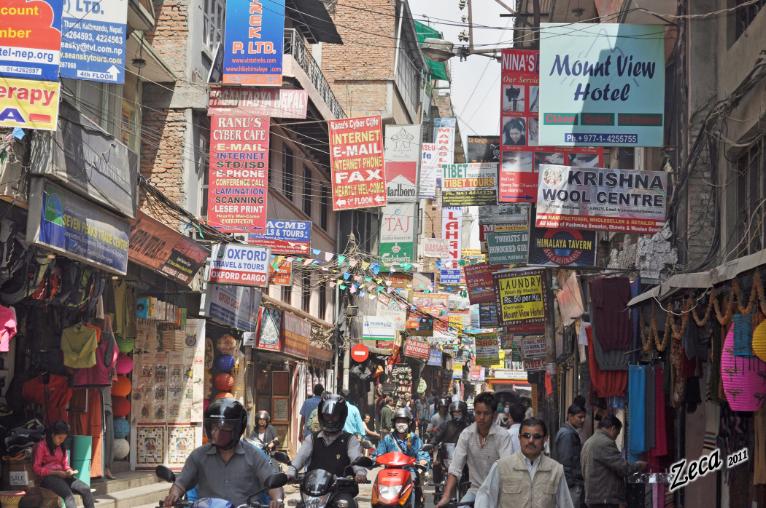
Thamel is a lively city in Kathmandu. It is really popular among tourists for its great atmosphere. The narrow streets are lined with shops selling handicrafts, trekking gear, and souvenirs. Additionally it has numerous restaurants and bars providing diverse cuisines. Thamel is also known for its crazy nightlife, with live music and cultural performances adding to its energetic vibe.
7. Garden of Dreams


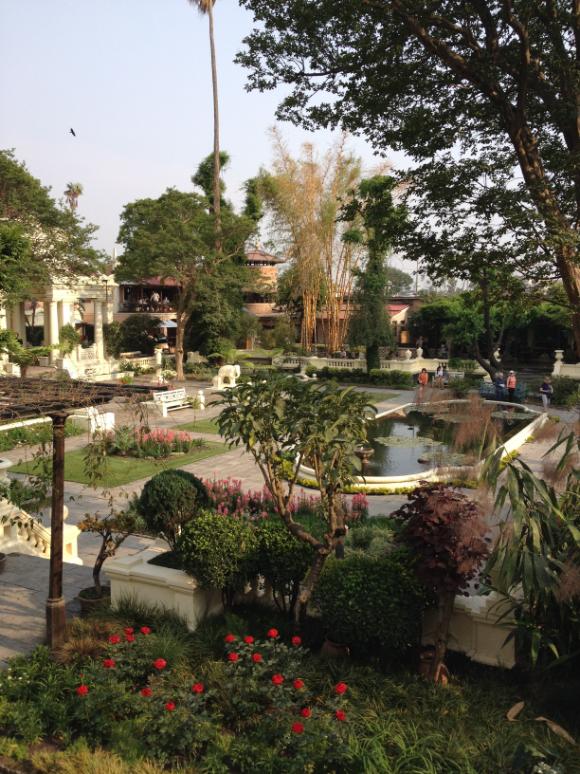
The Garden of Dreams is a beautifully designed garden in the early 1920s. It has elegant pavilions, tranquil ponds, and greenery all over. It provides a really peaceful escape from the city’s chaos.
Flight from Kathmandu to Paro, Bhutan
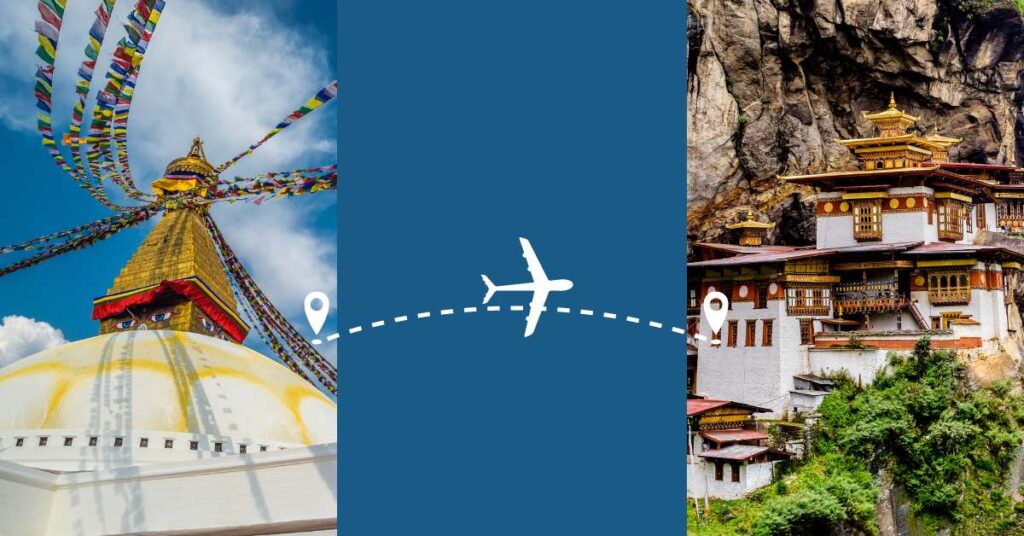
Flying from Kathmandu, Nepal, to Paro, Bhutan, during the Tibet Nepal Bhutan Tour is a quick journey. The flight takes about 1 hour. It covers a distance of approximately 250 miles (401 km). Flights depart from Tribhuvan International Airport (KTM) in Kathmandu and arrive at Paro Airport (PBH) in Bhutan. Overall, this flight is a great way to reach Bhutan easily.
Best Places to Visit in Bhutan
Bhutan is very well known as the “Land of the Thunder Dragon,”. It is a country of natural landscapes, spiritual monasteries, and very different and unique cultural experiences. Key attractions in Bhutan during your Tibet Nepal Bhutan Tour include:
1. Thimphu
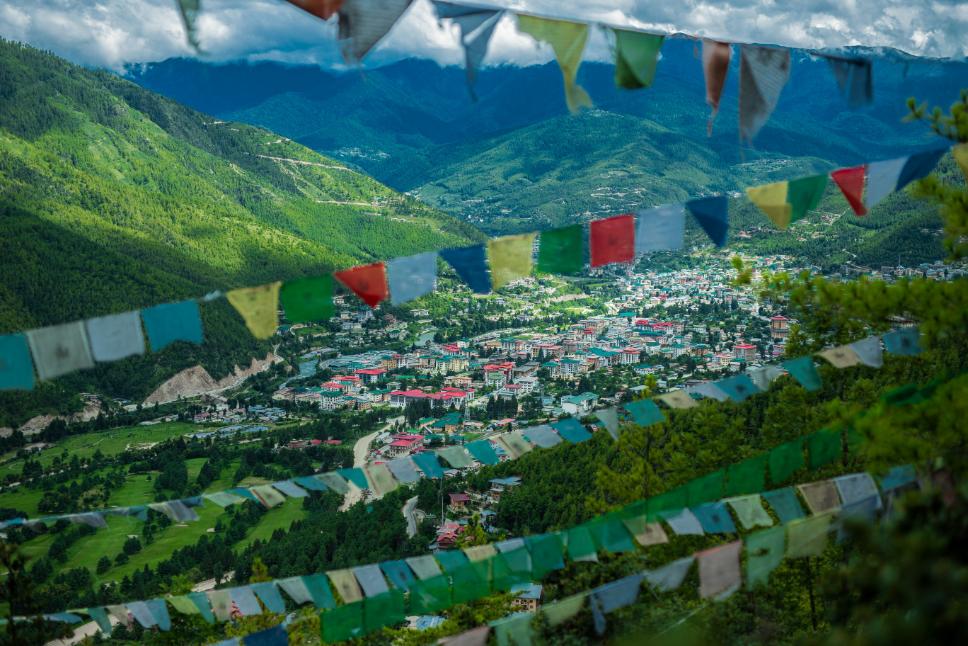
Thimphu is the capital city of Bhutan. It is known for its monasteries, traditional Bhutanese architecture, and the Great Buddha Dordenma statue. It also provides a learning into Bhutan’s rich cultural heritage through its various museums and cultural centers. Thimphu has a mix of modernity with tradition.
2. Tiger’s Nest Monastery (Paro Taktsang)

Situated on a cliffside, Tiger’s Nest Monastery is one of Bhutan’s most amazing landmarks. This sacred site puts forward a great view of the surrounding mountains and valleys. The hike to this monastery is actually challenging but really rewarding.
3. Punakha
Punakha is famous for its beautiful landscapes and the marvelous Punakha Dzong. Punakha Dzong is situated at the confluence of two rivers. The area is known for its agricultural beauty, with rice and chili fields dotting the countryside. It’s an excellent place to experience real rural life in Bhutan.
4. Dochula Pass
Dochula Pass provides a great wide angle panoramic view of the Himalaya. It has 108 memorial chortens built in honor of Bhutanese soldiers. The pass is a popular stop for travelers, especially during clear weather when the mountain views are breathtaking.
5. Gangtey Valley
Gangtey Valley is very famous for its beautiful landscapes and the Gangtey Monastery. Gangtey Monastery has traditional Bhutanese architecture. This very peaceful valley has the Black Crane Center, where visitors can learn about the endangered black-necked cranes that migrate here.
6. Chimi Lhakhang Monastery
Chimi Lhakhang Monastery is very well known as the “Monastery of the Divine Madman”. Chimi Lhakhang is famous for its unique phallic symbols and sprightly folklore.
7. Buddha Dordenma
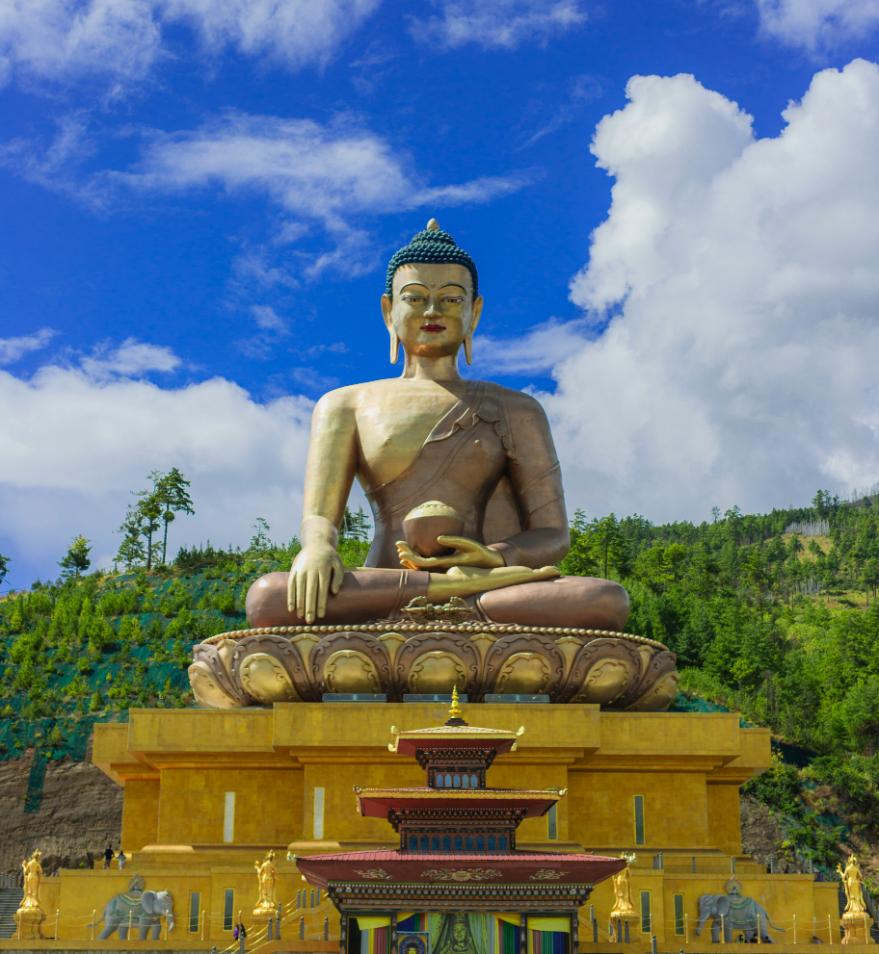
The Buddha Dordenma statue is one of the largest sitting Buddha statues in the world. It is located in the hills above Thimphu. This statue overlooks the valley and houses thousands of smaller Buddha statues inside. It’s a significant spiritual site.
8. Phobjikha Valley
Phobjikha Valley is a glacial valley known for its amazing natural beauty. It also has rich biodiversity. It is also a winter habitat for black-necked cranes. The valley is perfect for hiking and exploring traditional Bhutanese villages.
9. Rinpung Dzong
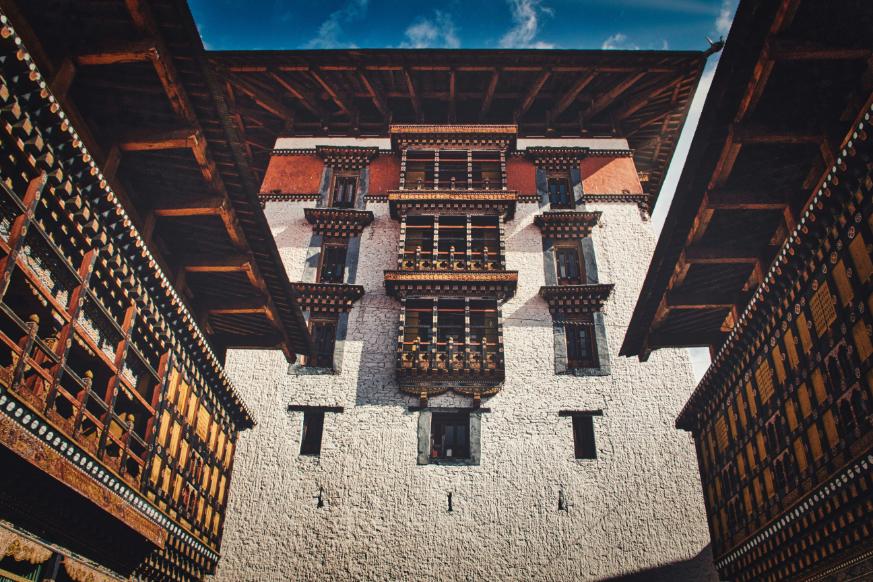
Rinpung Dzong is an architectural masterpiece. It serves as a monastery and administrative center in Paro. The dzong has beautiful woodwork and amazing murals, reflecting Bhutan’s rich cultural heritage.
Itinerary for Tibet Nepal Bhutan Tour
Day 1: Arrive in Beijing or Chengdu
You shall start off the journey in either Beijing or Chengdu. These two cities are really rich in culture and history.
Day 2: Sightseeing in Beijing or Chengdu
Spend the day exploring prominent sites in either Beijing or Chengdu, depending on your chosen city.
In Beijing, during the Tibet Nepal Bhutan Tour you will get to explore sites like the Forbidden City and Tiananmen Square. Also, visit the Great Wall of China for amazing views. The most popular sections include Badaling, which is very well known for its accessibility and perfect views, and Mutianyu, which is less crowded and provides beautiful forest scenery.
You can hike along the wall, take a cable car for a pleasing ride, and enjoy the rich history of this ancient structure, which dates back to the 7th century B.C.
If you choose Chengdu, you will visit the Giant Panda Breeding Research Base to see pandas up close. This is a great highlight for animal lovers. You will also stroll through Jinli Ancient Street for traditional shops and street food. You will then relax in a local tea house.
Day 3: Fly to Lhasa and Relax
On Day 3, you will take a flight from either Beijing or Chengdu to Lhasa during your Tibet Nepal Bhutan Tour. It is the capital of Tibet. Direct flights from Beijing typically take about 4 to 5 hours, while flights from Chengdu are slightly shorter, around 1.5 hours.
Upon arrival at Lhasa Gonggar International Airport, you will be greeted by the stunning views of the Tibetan plateau. It’s essential to take the rest of the day to relax and acclimatize to the high altitude of 3,650 meters (11,975 feet). This adjustment period is very important to help your body adapt to the thinner air and prevent you from getting altitude sickness.
Day 4: Sightseeing in Lhasa
On Day 4 of your Tibet Nepal Bhutan Tour, you will be exploring the rich cultural heritage of Lhasa by seeing its popular landmarks which include the Potala Palace and Jokhang Temple.
Start your day at the Potala Palace which is a UNESCO World Heritage Site. It is the former winter residence of the Dalai Lamas. This architectural wonder which was built in the 7th century and expanded in the 17th century, is situated on Red Hill at an altitude of 3,700 meters. As you pass the impressive halls and chapels, you will encounter beautiful murals, golden stupas, and the tombs of past Dalai Lamas.
Then you shall head to the Jokhang Temple. It is the most sacred site for Tibetan Buddhists. It is located in the busy Barkhor Square. This temple shows a mix of Tibetan, Indian, Nepalese, and Chinese architectural styles. Inside, you will see the revered statue of Jowo Shakyamuni Buddha.
Day 5: Continue Sightseeing in Lhasa
On Day 5, you shall explore more of Lhasa’s cultural sites by visiting Norbulingka Palace and the lively Barkhor Street.
Start your day at Norbulingka which is the summer palace of the Dalai Lamas. This beautiful palace has really lovely gardens and different architecture. This makes it a peaceful place to walk and enjoy the scenery. You can learn about its history and the important role it played in Tibetan culture.
Next, head to Barkhor Street which is a really busy market area around Jokhang Temple. Here, you will find shops selling traditional crafts, religious items, and tasty local snacks.
Day 6: Fly to Kathmandu and Relax
On Day 6 of your Tibet Nepal Bhutan Tour, you will be taking a flight from Lhasa to Kathmandu. The flight typically takes about 1 hour and 35 minutes. Upon arrival at Tribhuvan International Airport in Kathmandu, you will be seeing a really lively atmosphere of the city. Take the rest of the day to relax. You can enjoy a leisurely afternoon exploring nearby cafes or simply resting at your hotel to adjust to the sudden change in environment.
Day 7: Sightseeing in Kathmandu
On Day 7, explore the cultural sites of Kathmandu. You will start off by going to the Swayambhunath Stupa. This stupa is also known as the Monkey Temple. This ancient stupa puts forward beautiful views of the city. It has both Buddhist and Hindu shrines, along with playful monkeys all around.
Next, you will visit Kathmandu Durbar Square which is a UNESCO World Heritage Site that was once the royal palace. The square is filled with beautiful temples and palaces, showing you the unique architecture along with the rich history. Key sites include the Hanuman Dhoka Palace and Taleju Temple.
Day 8: Sightseeing and Nagarkot
You will start your day in Bhaktapur. Bhaktapur is very well known as the “City of Devotees.” Bhaktapur is a UNESCO World Heritage Site and is famous for its well-preserved temples, traditional architecture, and lively culture. Explore Bhaktapur Durbar Square in which you can admire the 55-Window Palace and Nyatapola Temple, and enjoy local delicacies like Juju Dhau (sweet yogurt) at a traditional eatery. Don’t forget to visit Pottery Square, where you can see local artisans at work.
In the afternoon, you will be heading to Nagarkot. Nagarkot is a hilltop village and it is almost about 32 kilometers from Bhaktapur.
Day 9: Flight to Pokhara and Relax
On Day 9 of your Tibet Nepal Bhutan Tour, you will be heading from Kathmandu to Pokhara. Pokhara is a beautiful lakeside city known for its natural scenery and adventure activities. The flight lasts about 25 to 30 minutes. The flight itself will make you see some of the most breathtaking views of the Himalayas along the way.
Upon arrival in Pokhara, take some time to relax. You can walk around Phewa Lake. Enjoy the great views of the water and the surrounding mountains. Go on a boat to explore the lake and then relax at one of the lakeside cafes.
Day 10: Sightseeing in Pokhara
On your 10th day of the Tibet Nepal Bhutan Tour, explore the beautiful attractions of Pokhara, starting Devi’s Falls. This is an amazing waterfall. It is famous for its underground tunnel, where the water disappears after rushing down the rocks. The best time to visit is during the monsoon season when the falls are at their most spectacular motion.
Afterward, head to Mahendra Cave. It is just nearby to Davi’s fall. It is another amazing limestone cave filled with stalactites and stalagmites. It is an exciting place to learn about the geological formations.
Finally, make your way to the World Peace Pagoda. It is located on a hill with an awesome view of the entire Pokhara. You can hike or take a short drive to reach the pagoda.
Day 11: Fly Back to Kathmandu and Relax
On Day 11 of your Tibet Nepal Bhutan Tour,, take a flight back to Kathmandu from Pokhara. The flight is short, lasting about 25 to 30 minutes again. Upon arrival at Tribhuvan International Airport, take some time to relax and enjoy a leisurely afternoon exploring the streets of Thamel or places around Kathmandu city.
This day is all about resting and preparing for the next part of your journey.
Day 12: Fly to Bhutan and Drive to Thimpu
On Day 12, take a flight from Kathmandu to Paro, Bhutan. The flight generally lasts about 1 hour.
Upon arrival at Paro International Airport, you will have a great view of the beautiful landscapes of Bhutan. After clearing customs, drive to Thimphu, the capital city, which is approximately 1 hour away.
Once you arrive in Thimphu, take some time to relax and acclimatize to the new environment. This day serves as a transition into your Bhutan adventure.
Day 13: Sightseeing in Thimphu
On Day 13, explore the key landmarks of Thimphu. Start by exploring the impressive Buddha Dordenma statue. This gigantic statue stands at 169 feet (51.5 meters). It is one of the largest sitting Buddha statues in the world. It is also filled with 125,000 smaller Buddha statues inside.
Next, visit Tashichho Dzong which is the main administrative and religious center of Bhutan. This beautiful fortress-like monastery has the throne room of the King of Bhutan and various government offices. The architecture is a great example of traditional Bhutanese design, with great woodwork and colorful decorations.
Day 14: Drive to Punakha and Sightseeing
On Day 14, you will drive from Thimphu to Punakha. This drive takes approximately 3 hours. The drive takes you over the Dochula Pass (3,100 m). Along the way, you can stop at the Dochula Chorten, a memorial built in honor of Bhutanese soldiers killed in a battle against Indian insurgents in 2003.
Upon arrival in Punakha, your first stop will be the Punakha Dzong. It is also known as Pungtang Dechen Photrang Dzong. This majestic fortress was built in 1637. It is served as the capital of Bhutan until 1955 and currently has the sacred relics of the southern Drukpa Lineage of Tibetan Buddhism.
After exploring the Punakha Dzong, you will then visit Chimi Lhakhang. It is a temple dedicated to the “Divine Madman” or Lama Drukpa Kunley. This temple is known for its colorful phallic symbols and folklore, and it is believed to bless couples with fertility.
In the afternoon, you may head on to visit a local village or engage in a short hike to enjoy the beautiful environment and learn about the rural life of Punakha.
Day 15: Drive to Paro and Sightseeing
Today you will be driving from Punakha to Paro. This drive takes about 2.5 to 3 hours.
Upon arrival in Paro, your first stop will be Rinpung Dzong. It is also known as the “Heap of Jewels.” This spectacular fortress is a great example of traditional Bhutanese architecture and is both a monastery and the administrative center for the Paro District. Explore its beautiful courtyards, woodwork, and lively murals that represent Buddhist teachings.
Next, visit Kyichu Lhakhang which is actually one of the oldest temples in Bhutan. It dates back to the 7th century. This temple is part of the 108 temples built by the Tibetan King Songtsen Gampo to subdue a demoness and promote Buddhism. Inside, you’ll find the revered statue of Jowo Jampa and beautiful murals. The peaceful surroundings make it a great spot for reflection.
Day 16: Hike to Tiger’s Nest
Today during your Tibet Nepal Bhutan Tour, we shall go hiking to the famous Tiger’s Nest Monastery in Paro. It is one of Bhutan’s most popular sites.
The hike begins at the parking area. It covers about 6.4 kilometers (4 miles) round trip, with an ascent of 520 meters (1,700 feet). It often takes 5 to 7 hours to complete, including time spent at the monastery. The trail will take you through beautiful forests, with prayer flags along the way.
After about 1 to 2 hours, you will reach the Taktsang Cafeteria. It is where you can rest and enjoy views of the monastery. The final stretch actually has climbing steep steps to the entrance. Inside, you can explore the monastery and take in the breathtaking views of the Paro Valley.
Day 17: Fly to Bangkok/Delhi/Kathmandu
On Day 17, conclude your Tibet Nepal Bhutan Tour by flying back from Paro International Airport to your home destination.
FAQ
You may also like:
Send an Enquiry
Error: Contact form not found.
© 2025 - Himalayan Trekking and Tours (P) Ltd. All Rights Reserved.


